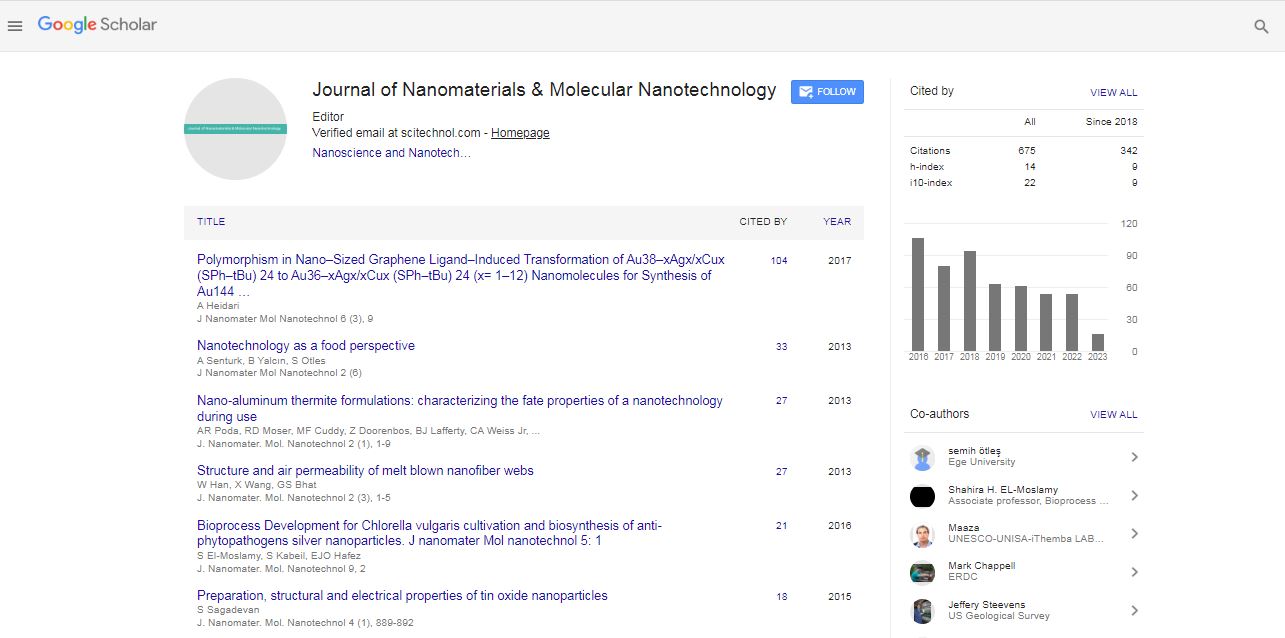Light-driven reversible shaping on azopolymeric structures
Francesca Frascella
Politecnico di Torino, Italy
: J Nanomater Mol Nanotechnol
Abstract
In recent years, micro and nano-structured polymeric films have attracted significant interest because of their promising potential application in many areas; including micro-fluidics, smart surfaces, photonics and tissue engineering. Nowadays, a plethora of processing technologies are available for fabricating complex polymeric architectures which are mostly static in nature, i.e., they cannot be morphologically modified once fabricated. Light-responsive materials such as azobenzene polymeric compounds (generally referred to as azopolymers) can overcome such a limitation opening the opportunity to active manipulate in terms of morphology, physical and mechanical properties a pre-patterned architectures, which are intrinsically static once fabricated. In azopolymeric films, a directional mass-migration effect can be triggered depending on the radiation wavelength, intensity, polarization state and topological charge, e.g. in vortex beams. Despite the underlying mechanism is still unclear to some extent, mass-migration in azopolymers has been widely exploited in the past for fabricating large-area periodic microstructures also known as Surface Relief Gratings (SRG) by exploiting intensity and/or polarization interference. In such a situation, lithographed azopolymeric patterns that could be subsequently modified by irradiation in controlled conditions are particularly attractive. For instance, irradiation with a linearly polarized light can elongate circular micro-pillars resulting in an ellipsoidal shape, wherein the elongation is along the polarization direction of the illumination beam. The light-induced contraction and expansion reshaping strategy of a polymeric structure shows exciting potential for a number of applications including microfluidics, lithography and tissue engineering. Tuning cells behavior in response to material manipulation cues is a promising goal in biology.
Biography
Francesca Frascella completed her degree in Advanced Chemical Methodologies at University of Torino in 2005 and PhD in Materials Science and Technology at Politecnico di Torino in 2009. During her PhD, she spent four months at Center for Photonics and Photonic Materials, Department of Physics of University of Bath (UK). Since 2009, she is a Post-doc Researcher at Politecnico di Torino. Her past activities concerned the preparation and surface chemical modification of porous silicon-based materials for applications in sensing. Furthermore, she was devoted to the chemical modification of several materials surface, both inorganic and polymeric, especially by means of plasma-assisted techniques. Currently, her research activity is focused on “New azo-polymer materials for reversible patterning of substrates hosting living cell cultures”. She is author of more than 25 peer-reviewed papers in international journals.
Email: Francesca.frascella@polito.it
 Spanish
Spanish  Chinese
Chinese  Russian
Russian  German
German  French
French  Japanese
Japanese  Portuguese
Portuguese  Hindi
Hindi 



